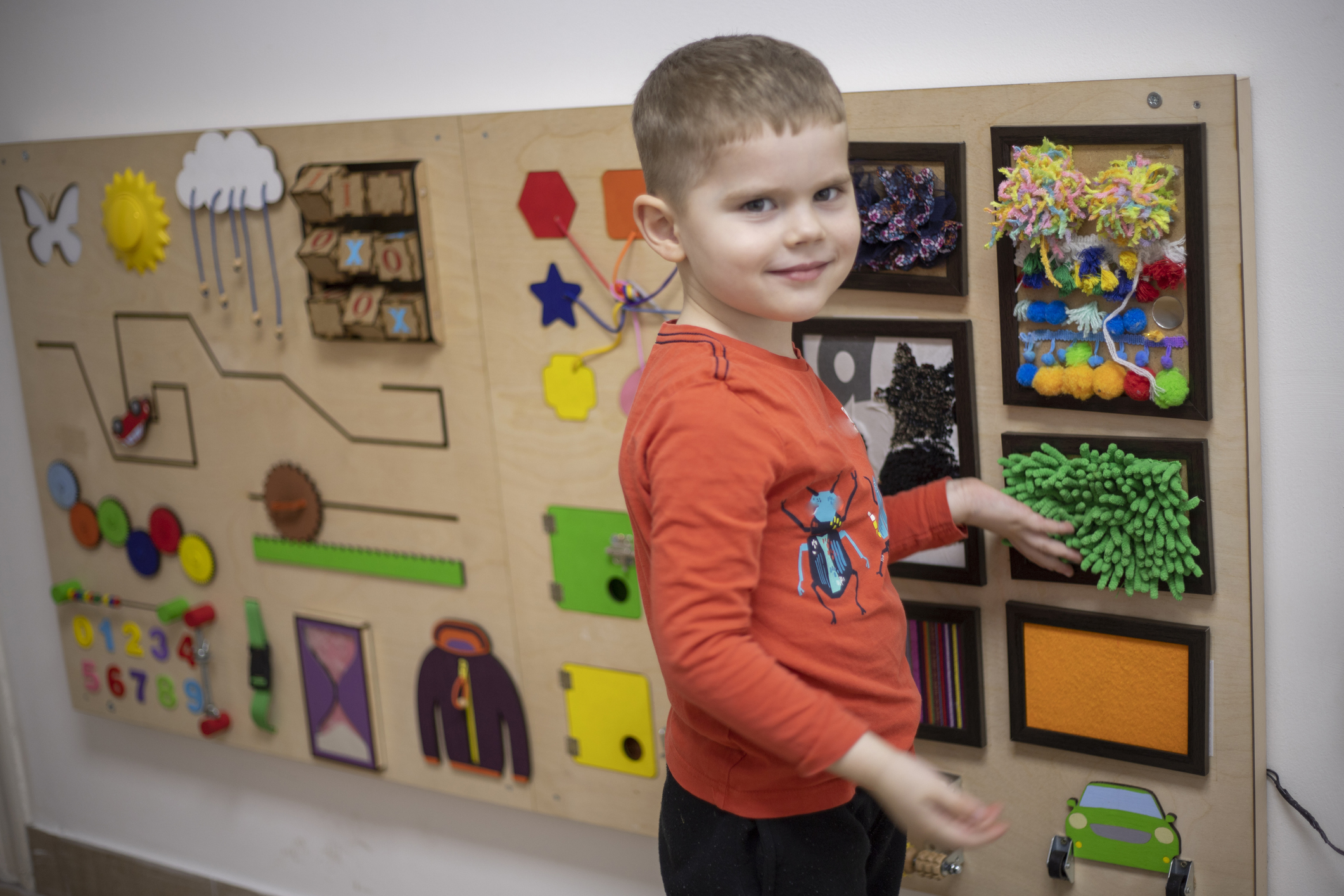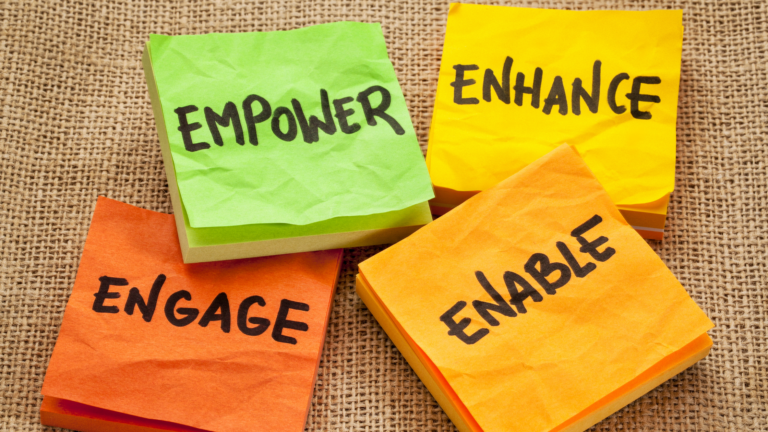In today’s fast-paced world, students are constantly bombarded with information and tasks that require their attention and focus. However, many students struggle with maintaining their concentration and retaining information due to limitations in their working memory. Working memory is a cognitive system responsible for temporarily storing and manipulating information in our minds. It plays a crucial role in learning, problem-solving, and academic performance.
Fortunately, there are various tools and activities available that can help enhance working memory and improve student learning outcomes. In this blog post, we will explore the importance of working memory in the learning process and delve into a range of effective tools and activities that can be incorporated to boost working memory.
Firstly, we will discuss the significance of using tools to enhance working memory. These tools act as external aids that assist in organising information, reducing cognitive load, and improving overall cognitive function. We will explore different types of tools, such as visual organisers, mnemonic devices, and digital apps, and highlight their benefits in enhancing working memory.
Next, we will delve into activities that can improve working memory. Engaging in specific exercises and tasks can help strengthen the neural connections associated with working memory. We will explore various types of activities, such as puzzles, memory games, and mindfulness exercises, and discuss how they can be incorporated into daily routines to enhance working memory.
Choosing the right tools and activities is crucial for maximizing the benefits of working memory enhancement. We will provide practical tips and guidelines to help educators and parents select tools and activities that are appropriate for individual students based on their specific needs and learning styles.
Furthermore, we will explore strategies for integrating these tools and activities into the student learning process. We will discuss how to incorporate them into lesson plans, homework assignments, and study sessions to create a supportive learning environment that fosters working memory development. Additionally, we will address the importance of monitoring and adjusting the tools and activities based on each student’s progress.
Finally, we will delve into the long-term benefits of enhanced working memory for student learning. Improved working memory has been linked to enhanced academic performance, increased cognitive abilities, and heightened confidence and self-esteem. We will explore these benefits in detail, emphasising the positive impact that working memory enhancement can have on a student’s overall educational journey.
In conclusion, enhancing working memory is a powerful tool for improving student learning outcomes. By incorporating effective tools and activities, educators and parents can provide students with the necessary support to strengthen their working memory and excel academically. So, let’s explore the world of working memory enhancement together and unlock the full potential of student learning.
Understanding Working Memory: A Foundation for Learning
Working memory is a crucial cognitive system that plays a fundamental role in the learning process. It refers to the ability to hold and manipulate information in our minds for short periods. Unlike long-term memory, which is responsible for storing vast amounts of information over extended periods, working memory is responsible for the temporary storage and processing of information.
Working memory is essential for various cognitive tasks, including reading comprehension, problem-solving, attention control, and decision-making. It allows students to actively engage with new information, make connections between concepts, and apply knowledge to real-life situations.
To better understand working memory, it is important to explore its components. Working memory consists of three main components:
- Central Executive: This component acts as the control centre of working memory. It allocates attention to relevant information, coordinates the storage and retrieval of information, and manages cognitive resources. The central executive plays a critical role in focusing attention, inhibiting distractions, and shifting between tasks.
- Phonological Loop: The phonological loop is responsible for the temporary storage and rehearsal of auditory and verbal information. It consists of two subcomponents: the phonological store, which holds auditory information, and the articulatory rehearsal process, which allows for the repetition of information to maintain it in working memory.
- Visuospatial Sketchpad: The visuospatial sketchpad is responsible for temporarily holding and manipulating visual and spatial information. It allows students to mentally visualise objects, spatial relationships, and spatially organise information.
Working memory capacity varies among individuals, and it can be influenced by factors such as age, attentional abilities, and cognitive load. Some students may have a higher working memory capacity, enabling them to process and retain more information simultaneously, while others may have a limited capacity.
Understanding the role of working memory in the learning process is essential for educators and parents to support students effectively. By recognizing the limitations and strengths of working memory, educators can tailor instructional strategies and provide appropriate tools and activities to enhance working memory and optimize student learning outcomes.
In the next sections, we will explore various tools and activities that can be employed to enhance working memory. These tools and activities act as external supports that aid in reducing cognitive load, improving information organization, and promoting the development of effective strategies for working memory utilisation. By incorporating these tools and activities into the learning environment, educators can provide students with the necessary scaffolding to enhance their working memory capacities and facilitate improved learning experiences.
Tools for Enhancing Working Memory
Enhancing working memory is a valuable endeavour that can greatly benefit students’ learning experiences. One effective approach to boost working memory is by utilising various tools specifically designed to support and enhance this cognitive function. These tools act as external aids that help students organise information, reduce cognitive load, and improve overall cognitive performance. In this section, we will explore the importance of using tools to enhance working memory and examine different types of tools that can be employed for this purpose.
Importance of Using Tools to Boost Working Memory
Using tools to enhance working memory can offer several advantages for students. These tools provide external support that complements the limitations of working memory capacity. By reducing the cognitive load on working memory, students can allocate their mental resources more efficiently and focus on understanding and applying new information. Additionally, tools can aid in information organisation, helping students create meaningful connections and retrieve information more effectively. The use of tools also promotes the development of effective strategies for working memory utilisation, empowering students to become independent learners. Overall, employing tools to boost working memory can enhance student engagement, comprehension, and retention of information.
Various Tools to Enhance Working Memory
There is a wide range of tools available that can effectively enhance working memory. Educators and parents can explore these tools to find the most suitable options for their students. Here are some examples:
- Visual Organisers: Visual organisers, such as graphic organizers, mind maps, and concept maps, provide a visual representation of information, aiding in its organisation and retrieval. These tools help students identify key concepts, establish relationships between ideas, and create a structured framework for understanding complex topics.
- Mnemonic Devices: Mnemonic devices are memory aids that use patterns, associations, or acronyms to assist in the recall of information. These devices can be particularly helpful for memorizing lists, sequences, or complex concepts. Examples of mnemonic devices include acronyms (e.g., PEMDAS for the order of operations), visualisation techniques, and rhymes.
- Digital Apps and Software: With advancements in technology, there is a wide range of digital tools and applications designed specifically to enhance working memory. These apps offer features such as note-taking, task management, spaced repetition, and interactive learning exercises. Examples include Evernote, Anki, and Quizlet.
- Timers and Alarms: Timers and alarms can be used as effective tools to manage time and improve focus. By setting specific time intervals for focused work and short breaks, students can enhance their attention span and maintain a productive study routine.
- Sensory Tools: Sensory tools, such as fidget toys, stress balls, or sensory cushions, can help students regulate their sensory input and improve concentration. These tools provide a physical outlet for excess energy and can be particularly beneficial for students with attention difficulties.
It is important to note that the effectiveness of these tools may vary depending on individual student needs and preferences. Therefore, it is crucial to assess each student’s working memory capacity and select tools that align with their learning style and requirements.
How to Choose the Right Tools
When selecting tools to enhance working memory, it is essential to consider several factors. Here are some guidelines to help educators and parents choose the right tools for students:
- Assess Individual Needs: Understand the specific challenges faced by the student and identify the areas of working memory that require improvement. This assessment will guide the selection of appropriate tools and activities.
- Consider Learning Style: Take into account the student’s preferred learning style. Some students may benefit more from visual tools, while others may prefer auditory or kinesthetic approaches. Choose tools that align with the student’s learning style to optimise their engagement and comprehension.
- Trial and Evaluation: Test different tools with the student to determine their effectiveness. Monitor the student’s progress and gather feedback to assess whether the selected tools are enhancing their working memory and overall learning experience.
- Flexibility and Adaptability: Look for tools that can be customised and adjusted based on the student’s progress. Flexibility and adaptability allow for personalised support and ensure that the tools remain effective as the student’s working memory capacity improves.
By considering these factors and selecting the appropriate tools, educators and parents can effectively enhance students’ working memory capacities and create a supportive learning environment. In the next section, we will explore a range of activities that can further contribute to working memory enhancement.
Activities to Improve Working Memory
Activities play a vital role in improving working memory by engaging students in cognitive exercises that strengthen the neural connections associated with this cognitive function. These activities are designed to challenge and train the working memory system, allowing students to enhance their ability to process and retain information. In this section, we will explore the significance of activities in memory enhancement, discuss different types of activities that can boost working memory, and provide guidance on executing these activities effectively.
Significance of Activities in Memory Enhancement
Engaging in activities specifically designed to improve working memory can yield significant benefits for students. These activities provide opportunities for students to actively exercise their working memory, allowing them to develop strategies for information encoding, storage, and retrieval. By consistently challenging and training the working memory system, students can strengthen their ability to focus, concentrate, and process complex information. Moreover, these activities promote cognitive flexibility, as students learn to switch between multiple tasks and adapt to new learning environments. Regular participation in memory-enhancing activities can lead to long-lasting improvements in working memory capacity, which can positively impact overall learning outcomes.
Different Types of Activities to Boost Working Memory
Various types of activities can effectively enhance working memory. Educators and parents can incorporate these activities into daily routines, study sessions, or classroom exercises to provide students with opportunities for targeted working memory development. Here are some examples of activities that can boost working memory:
- Puzzles and Brain Teasers: Activities such as puzzles, riddles, Sudoku, crosswords, and logic games challenge students to use their working memory to analyze information, make connections, and solve problems. These activities require students to hold multiple pieces of information in mind simultaneously, promoting working memory capacity expansion.
- Memory Games: Memory games, like matching card games or the “Simon Says” game, require students to remember and recall sequences of visual or auditory information. These games exercise the phonological loop and visuospatial sketchpad components of working memory, enhancing students’ ability to retain and manipulate information in these domains.
- Working Memory Training Apps: There are numerous digital apps and online programs specifically designed to improve working memory. These apps offer a variety of exercises that target different aspects of working memory, such as spatial memory, auditory memory, and attention control. Examples include Cogmed, Lumosity, and BrainHQ.
- Physical Movement and Coordination Activities: Physical activities that involve coordination, such as playing a musical instrument, dancing, or playing sports, can also enhance working memory. These activities engage multiple sensory modalities, requiring students to coordinate movements and process sensory information while maintaining focus and concentration.
- Mindfulness and Meditation: Mindfulness exercises and meditation techniques can improve working memory by promoting attentional control and reducing distractions. Activities such as focused breathing, body scans, or mindfulness-based stress reduction practices help students develop the ability to sustain attention and regulate their cognitive processes.
Proper Execution of Activities
To ensure the effectiveness of memory-enhancing activities, it is important to execute them properly. Here are some guidelines to consider:
- Gradual Progression: Start with activities that align with the student’s current working memory capacity and gradually increase the difficulty level as their skills improve. Gradual progression allows students to build their working memory capacity incrementally, preventing overwhelm or frustration.
- Consistency and Frequency: Regular engagement in memory-enhancing activities is key to achieving optimal results. Encourage students to practice these activities consistently and incorporate them into their daily routines or study schedules.
- Individualized Approach: Tailor activities to each student’s specific needs and preferences. Consider their learning style, interests, and areas of working memory weakness when selecting and designing activities. Personalised activities are more engaging and effective in improving working memory.
- Provide Guidance and Support: Offer clear instructions and guidance to students while engaging in memory-enhancing activities. Provide feedback, encouragement, and scaffolding as needed to ensure students understand the tasks and can effectively apply working memory strategies.
By incorporating these activities into educational settings, educators and parents can create an environment that actively supports and enhances working memory development. In the next section, we will explore how to integrate these tools and activities into the student learning process, maximizing their impact on student learning outcomes.
How to Incorporate Tools and Activities into Student Learning
Integrating tools and activities that enhance working memory into the student learning process is essential for maximizing their benefits. By seamlessly incorporating these tools and activities into the curriculum and instructional practices, educators can create a supportive learning environment that fosters working memory development. In this section, we will explore strategies for integrating tools and activities into student learning, adjusting them based on student progress, and continuously evaluating their effectiveness.
Integrating Tools and Activities in the Learning Process
To effectively incorporate tools and activities into student learning, educators can follow these strategies:
- Align with Curriculum Goals: Ensure that the selected tools and activities align with the curriculum goals and learning objectives. Identify areas where working memory plays a crucial role and incorporate tools and activities that directly address those areas.
- Introduce Tools and Activities Explicitly: Provide clear instructions and explanations about the purpose and benefits of using specific tools and engaging in memory-enhancing activities. Help students understand how these tools and activities can support their learning process and enhance their working memory capacities.
- Embed in Lesson Plans and Assignments: Integrate the use of tools and activities into lesson plans, assignments, and projects. Design activities that require students to apply working memory strategies and utilise the selected tools to complete tasks. For example, students can use visual organisers to create concept maps or mnemonic devices to remember key information.
- Encourage Collaborative Learning: Promote collaboration among students by incorporating tools and activities that encourage peer interactions. Group discussions, cooperative learning projects, or interactive games can enhance working memory through social engagement and shared problem-solving.
Adjusting Tools and Activities Based on Student’s Progress
As students progress in their working memory development, it is important to adjust the tools and activities to suit their evolving needs. Here are some considerations for adjusting tools and activities:
- Monitor Student Progress: Regularly assess and monitor students’ working memory capabilities to identify areas of improvement and areas that may require additional support. Use formative assessments, observations, and feedback to gauge their progress.
- Differentiate Instruction: Differentiate instruction based on individual student needs. Provide additional support or challenge to students based on their working memory capacity. Adjust the difficulty level of activities or provide additional scaffolding as required.
- Provide Opportunities for Reflection and Metacognition: Encourage students to reflect on their learning process and evaluate the effectiveness of the tools and activities they have been using. Foster metacognitive skills by prompting self-assessment and reflection on how working memory strategies have contributed to their learning outcomes.
Continuous Evaluation of Tools and Activities
Regular evaluation of the tools and activities used to enhance working memory is essential to ensure their ongoing effectiveness. Here are some strategies for continuous evaluation:
- Gather Student Feedback: Seek feedback from students to understand their experiences with the tools and activities. Ask for their insights on the usefulness, engagement level, and impact of the tools and activities on their working memory development.
- Analyse Learning Outcomes: Assess the impact of the tools and activities on student learning outcomes. Analyse academic performance, comprehension, retention, and transfer of knowledge to determine the effectiveness of the tools and activities in improving working memory and overall learning.
- Stay Informed about Research and Best Practices: Stay updated with current research and best practices related to working memory enhancement. Explore new tools, techniques, and approaches that emerge in the field and consider their applicability to the learning environment.
By integrating tools and activities into the learning process, adjusting them based on student progress, and continuously evaluating their effectiveness, educators can optimise student learning outcomes and support the development of robust working memory capacities. In the next section, we will explore the long-term benefits of enhanced working memory for student learning.
Long-term Benefits of Enhanced Working Memory for Student Learning
Enhancing working memory has numerous long-term benefits that positively impact student learning outcomes. As students develop and strengthen their working memory capacities, they experience improvements in various aspects of their academic performance and cognitive abilities. In this section, we will delve into the long-term benefits of enhanced working memory for student learning, highlighting the positive effects on academic performance, cognitive abilities, and overall confidence and self-esteem.
Improved Academic Performance
Enhanced working memory directly contributes to improved academic performance. With a stronger working memory capacity, students are better equipped to handle complex tasks, comprehend new information, and engage in critical thinking. They can efficiently process and retain information, leading to improved reading comprehension, problem-solving skills, and analytical thinking. Students with enhanced working memory have an advantage in learning new subjects, as they can easily grasp and connect new concepts to their existing knowledge base. This ability to efficiently store and manipulate information allows for more effective studying, leading to better performance in exams and assessments.
Enhanced Cognitive Abilities
Working memory is closely linked to various cognitive abilities, and enhancing working memory capacity can have a positive ripple effect on other cognitive functions. By strengthening working memory, students experience improvements in attention control, cognitive flexibility, and information processing speed. They become more adept at managing distractions, shifting between tasks, and filtering out irrelevant information. This enhanced cognitive control and flexibility empower students to engage in complex problem-solving, make connections between different subjects, and adapt to new learning environments. Overall, enhanced working memory supports the development of robust cognitive abilities that are essential for academic success and lifelong learning.
Increased Confidence and Self-esteem
As students experience improvements in their working memory capacities and witness the positive impact on their academic performance, they gain confidence in their abilities. The ability to effectively process and retain information boosts their self-esteem and belief in their capacity to succeed academically. They become more willing to take on challenging tasks, engage actively in class discussions, and participate in academic activities. With enhanced working memory, students feel more equipped to handle the demands of their education, leading to increased motivation, self-efficacy, and a positive attitude towards learning.
Transferable Skills for Life
The benefits of enhanced working memory extend beyond the academic realm. The cognitive skills developed through working memory enhancement, such as attention control, organisation, problem-solving, and information processing, are transferable to various aspects of life. Students with enhanced working memory are better equipped to handle complex real-life situations, manage time effectively, and make informed decisions. These skills are valuable not only in academic settings but also in future careers, personal relationships, and overall daily functioning.
By enhancing working memory, educators and parents provide students with a powerful tool that positively impacts their academic performance, cognitive abilities, and self-confidence. As students develop robust working memory capacities, they gain a competitive edge in their educational journey and beyond. Therefore, investing in working memory enhancement is a valuable endeavour that can pave the way for long-term success and fulfilment for students.
Related posts:
 Understanding Adverse Childhood Experiences (ACEs): A Guide for Incorporating Trauma-Informed Approaches into Teaching
Understanding Adverse Childhood Experiences (ACEs): A Guide for Incorporating Trauma-Informed Approaches into Teaching
 Creating Safe Spaces: Strategies for Fostering Healing and Support in Trauma-Informed Classrooms
Creating Safe Spaces: Strategies for Fostering Healing and Support in Trauma-Informed Classrooms
 Creating Safe Spaces: Strategies for Fostering Healing and Support in Trauma-Informed Classrooms
Creating Safe Spaces: Strategies for Fostering Healing and Support in Trauma-Informed Classrooms
 A Teacher’s Guide to Trauma-Informed Classrooms
A Teacher’s Guide to Trauma-Informed Classrooms




